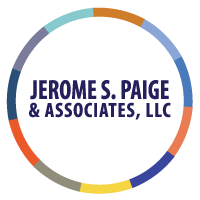We testified on behalf of the plaintiff regarding the loss of business value due to a wrongful repossession of a company’s trucks. What was the case’s outcome? The plaintiff received some compensation as a result of “arbitration.” How much? We don’t know, and rarely do we see the value of a settlement.
During the exchange of documents and reports and sitting for depositions, the defense’s forensic accounting expert focused on “valuing a business at a fixed point in time.” We, the forensic economic experts, focused on valuing the company as “an ongoing concern.”
The insights we gained, in this case, add to the lessons we’ve been compiling for small business owners, particularly owner-operators. These lessons owner-operators can incorporate into the management of their businesses.
In previous blogs, we highlighted some of these issues as we identified the insights owner-operators can gain from the Elon Musk-Twitter wrangling. We highlighted how this wrangling pushed topics like “logic models” or “value propositions,” core business, free cash flow, and EBITDA (earnings before interest, taxes, depreciation, and amortization) into the popular press.
Valuing a Business
In our Trucking Company case, the defense’s forensic accounting expert stated that it is appropriate to use a valuation approach for “the sale or acquisition of an asset or business.” We agreed, and to support that, we listed the three approaches to valuing a business for sale or acquisition.
Asset-Based Approach
Market Approach
Income Approach
Source: Stanley P. Stephenson, Ph.D., David A. Macpherson, Ph.D., and Gerald D. Martin, Ph.D. (Revision 28 6/2021). Determining Economic Damages; Guidance for Lawyers and Experts in Civil Litigation. Santa Ana: James Publishing Group. See Part III. |
Valuing an Ongoing Concern
However, we noted that the plaintiff was not trying to sell their business or acquire a company. So the question we posed was: What is the impact of various truck repossessions on the company’s ongoing operation?
We developed the following chart to highlight the differences in the answers to the questions the defense expert and we posed. Also, owner-operators can use this matrix when thinking about their businesses.
|
Comparison of Approaches |
||
| Defense | Plaintiff | |
|
Sale/Acquisition |
Ongoing Concern |
|
|
Static |
Dynamic |
|
| Valuation |
Income Generation |
|
| Utilization (Truck) |
Yes |
Yes |
| Revenue |
Yes |
Yes |
| Expenses |
Yes |
Yes |
|
Free Cash Flow |
Yes |
Yes |
| Lending Rate (Weighted Cost of Capital) |
Yes |
No |
| Interest |
Yes |
No |
| Tax Rates |
Yes |
No |
| Taxes |
Yes |
No |
| Depreciation & Amortization |
Yes |
No |
|
Yes |
No |
|
| Net Profit |
Yes |
No |
For us, the defense’s methodology is appropriate for valuing a static business or assets. We are trying to value the asset or business for sale. There the focus might be on the loss of net profit.
But this is not what we were trying to do in this case. We pointed out that when we use the free cash flow method, we treat the assets as dynamic. For us, this is the proper measure for valuing an ongoing concern. The free cash flow comprises the funds the Trucking Company would have available to reinvest in the business or for other uses.
A recent article on the operating profits of Telsa reiterates our points – Tesla Operating Margin #1 in Industry. The article notes that Tesla’s
record operating margin helps the company achieve large and growing cumulative profitability. (Our emphasis).
In our trucking case, the business lost the operating margin (free cash flow) due to the repossessions. They lost the financial resources to expand the business or to have it available for other uses.
The article highlights the magnitude of Tesla’s free cash flow generation.
The company went from spending a few billion dollars more than it made in 2017 to almost breaking even in 2018 to making a billion dollars in 2019 to making almost 3 billion dollars in 2020, and so on. In the last 4 quarters, Tesla has generated $7 billion of free cash flow! Yowzers.
Owner-workers. Know your operating margins, seek to expand them, and reinvest them wisely.
Read and share our previous blogs on these topics:
